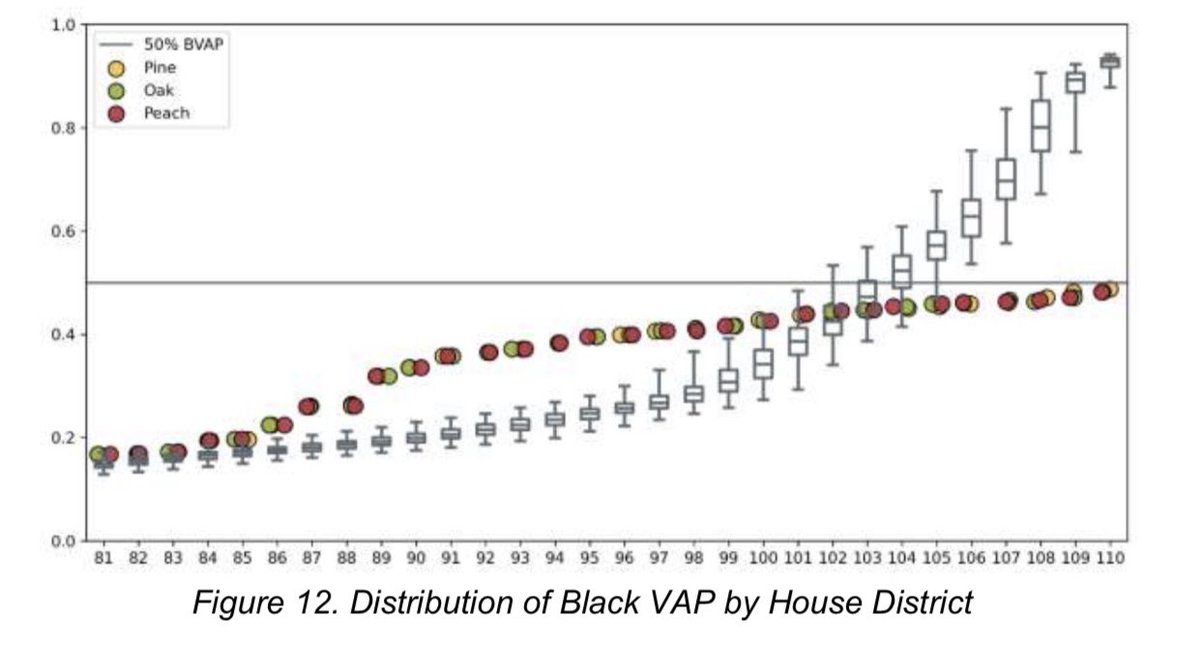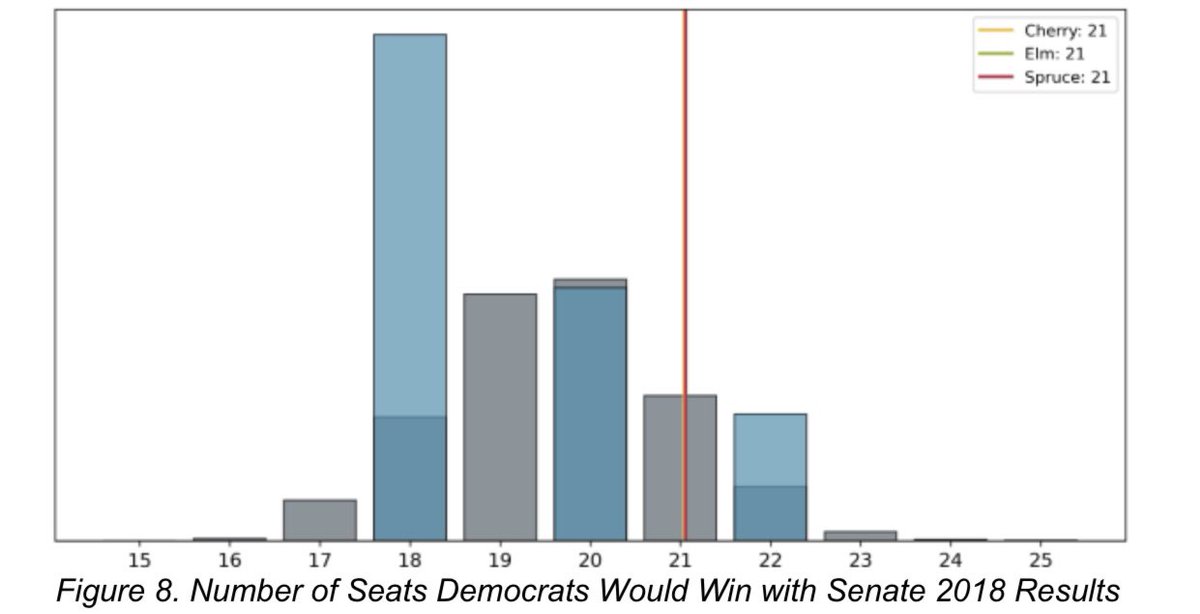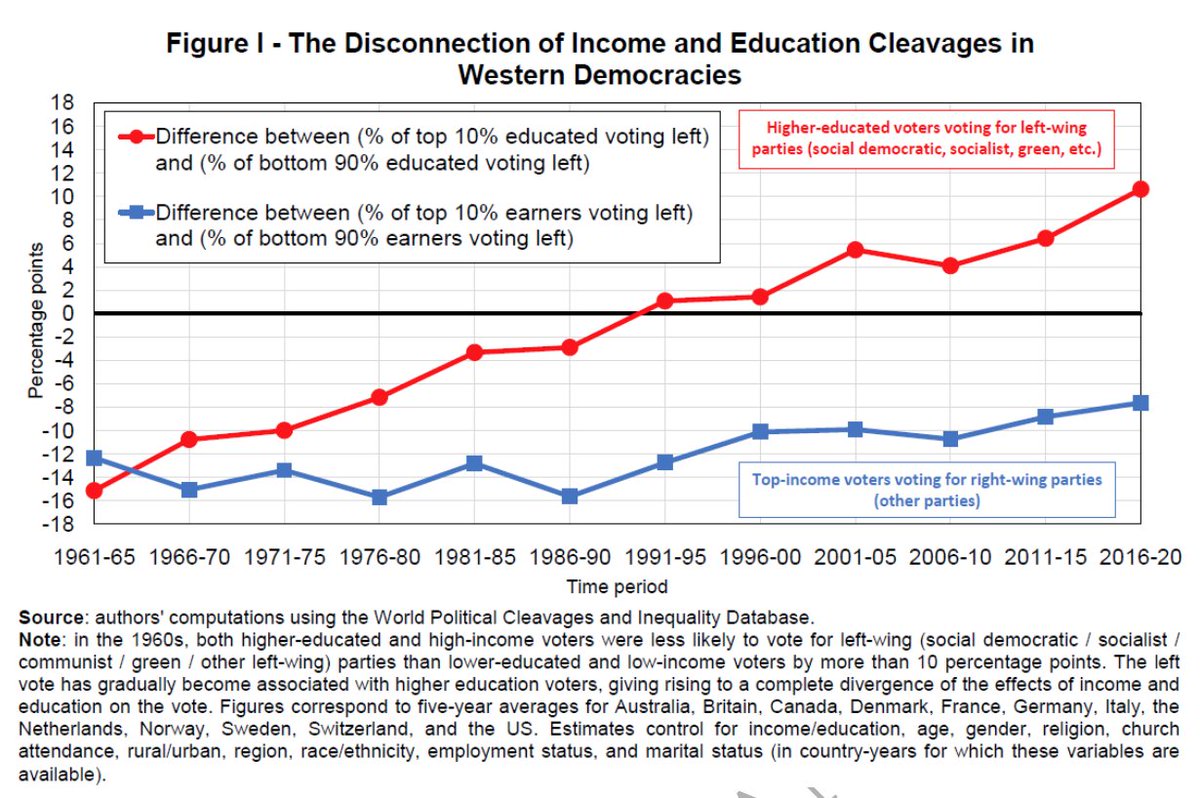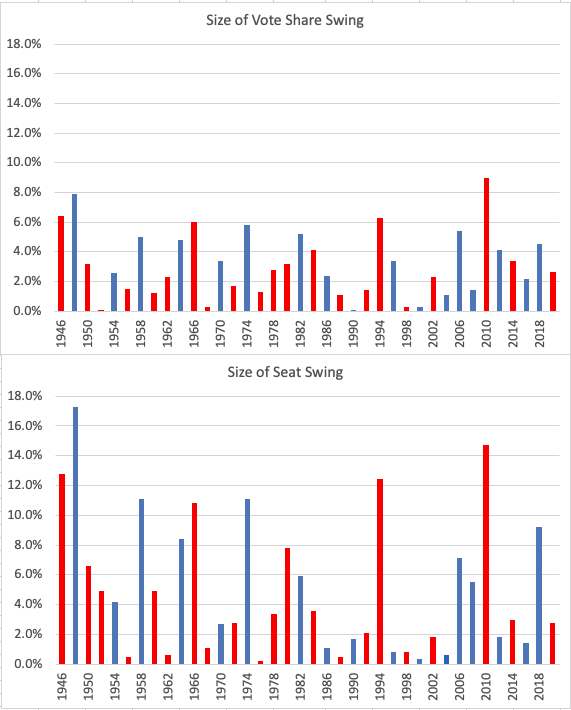
This confusion seems to be widespread. Thermostatic politics does not require Biden to change his policy proposals from the campaign. It also does not require close voter attention to policy detail. It just requires voters to see or expect a leftward change in policy from Trump
https://twitter.com/MattGrossmann/status/1456435998263500802
eg voters asked in the Trump era whether they want more or less immigration or more or less health care spending are now being asked more or less from a new (or expected new) status quo. Fewer should now say more & more should say less, even if no one has changed ideal views
How much that (widespread & largely mechanical) pattern causes changes in votes or differential turnout is a more controversial ? But no one should think “he said it in the campaign” “they haven’t passed all of it yet” or “voters don’t know the details” undermines the pattern
Thermostatic politics is frustrating to practitioners because it is not really about party strategy. All that’s required is a change in policy or expected policy from Republicans to Democrats, which is much bigger than the differences among plausible Democratic policy agendas
• • •
Missing some Tweet in this thread? You can try to
force a refresh
















